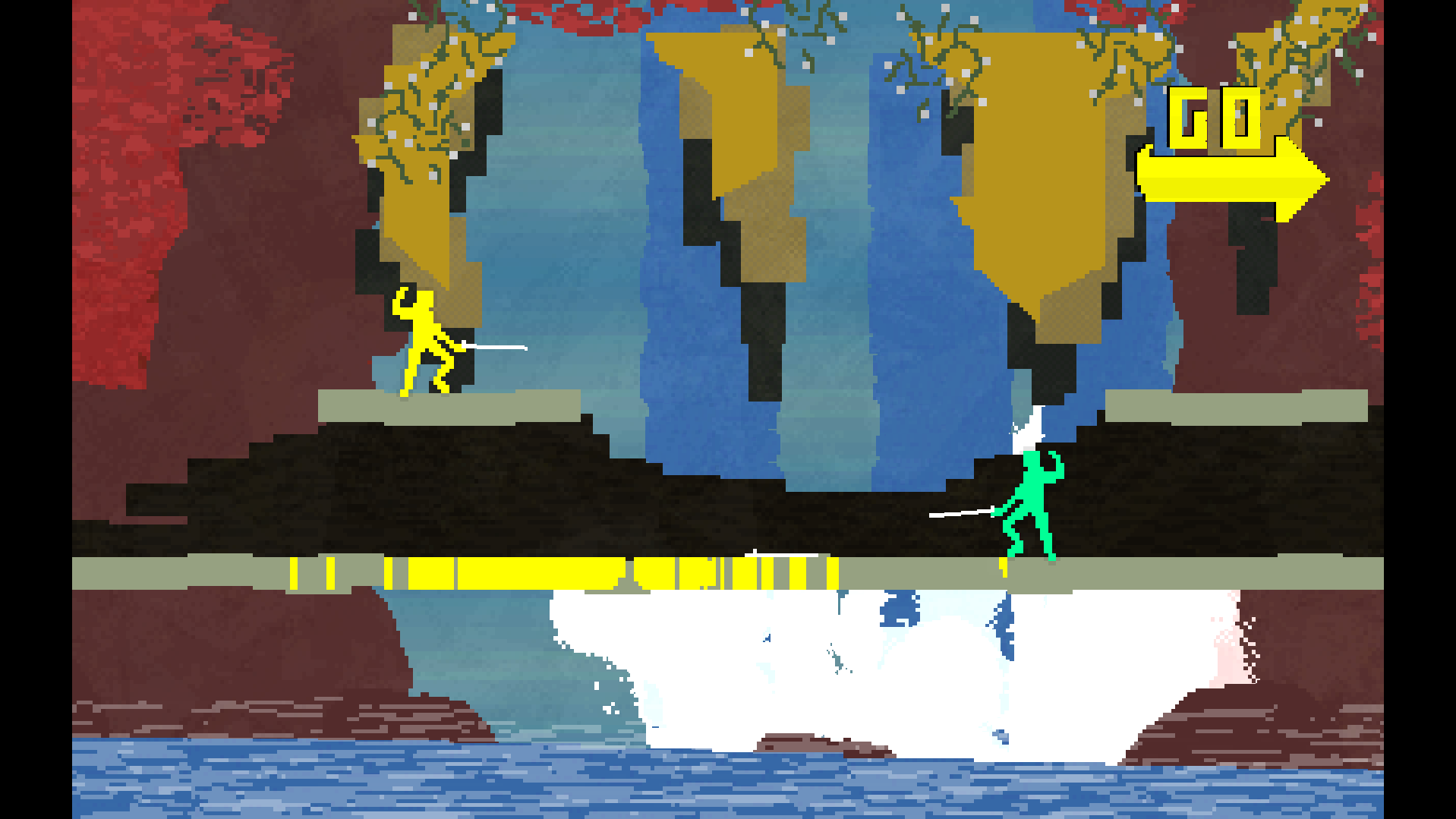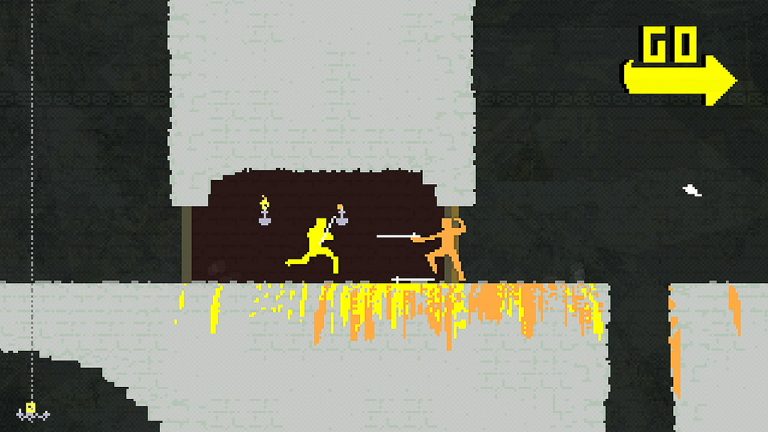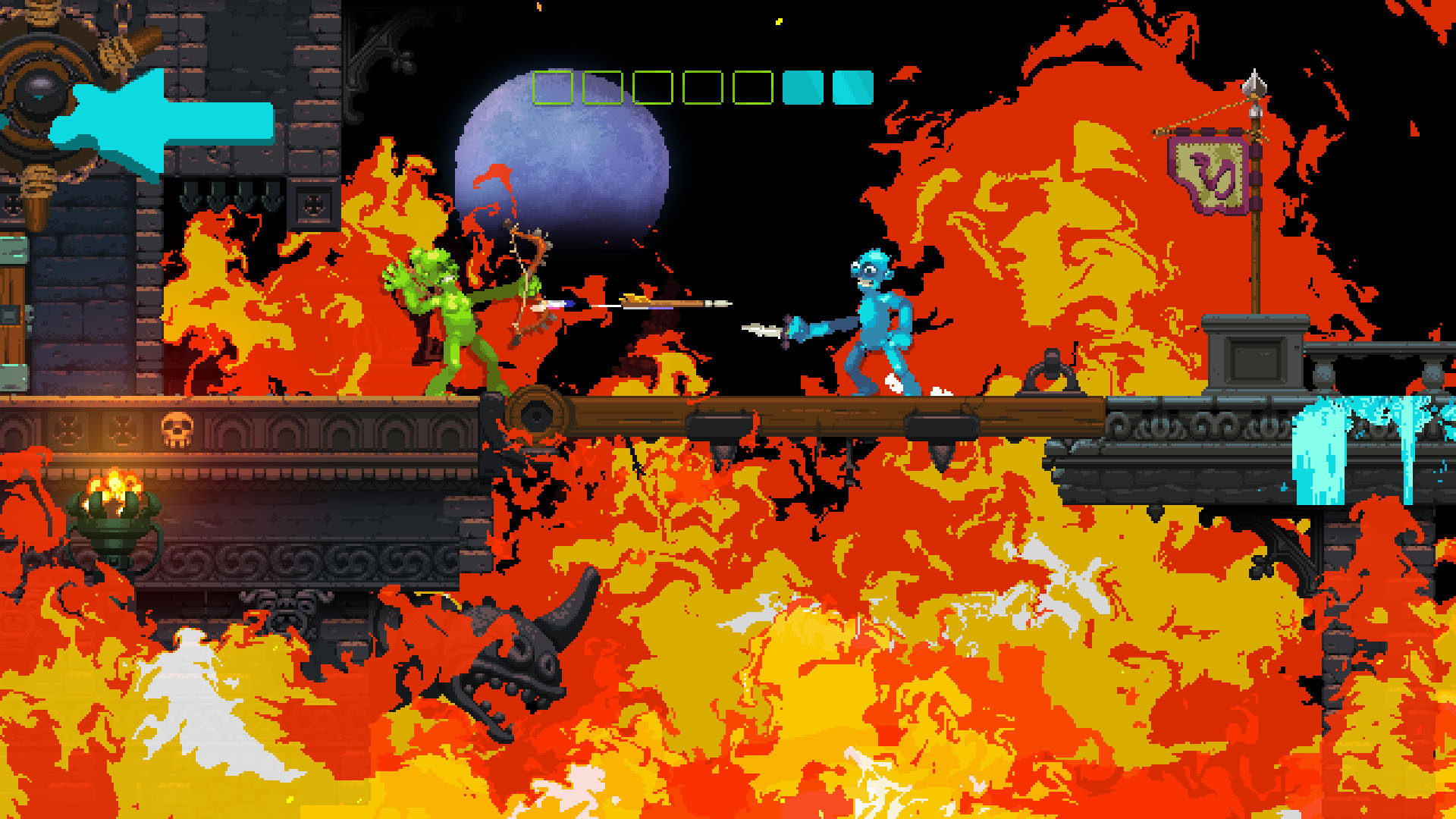In Nidhogg, the design of each map plays a crucial role in shaping the dynamics of combat and strategy, making the environment just as important as the players’ skills. This strategic importance is evident in various maps, which present players with unique challenges and opportunities that influence gameplay significantly.
Key Map Features and Challenges
1. The Wilds:
– Concealment through Tall Grass: The tall grass in this map offers players the ability to hide while remaining still, introducing a stealth mechanic that can be pivotal in ambush scenarios. Players must be vigilant, as opponents may utilize this feature to catch them off-guard.
– Varied Terrain: The presence of rocky pyramids and waterfalls adds complexity to the environment, providing various paths and elevation changes that players can use for tactical advantage. The rugged layout can facilitate both defensive and offensive strategies.
2. The Mines:
– Narrow Corridors: The design here restricts movement options significantly, limiting players’ ability to jump or throw weapons. This forces combat to occur in close quarters, leading to intense engagements where timing and positioning become critical.
– Encouragement of Close-Range Combat: With limited maneuverability, players are prompted to engage in hand-to-hand combat rather than long-range tactics, which ultimately affects player strategies and interactions.
3. Symmetrical Design:
– A common feature across maps is their symmetrical layout, which ensures that no player has an inherent advantage based solely on map familiarity or positioning. This symmetry leads to strategic choke points that compel players to confront each other directly, enhancing the competitiveness of encounters.
4. Nidhogg 2 Variability:
– In Nidhogg 2, which includes 13 diverse maps such as Clouds and others, players experience variations in visual themes and obstacles. Although specific environmental hazards were not detailed in available descriptions, the maps are designed to leverage their unique features for tactical gameplay.
– While external elements like weather effects or aggressive wildlife were not noted as challenges, the emphasis remains on using the environment itself—through obstacles, heights, and layout—to shape combat scenarios.
Conclusion
In summary, each map in Nidhogg contributes distinctly to the gameplay experience through its environmental features, such as terrain elements and choke points. Players must adapt their strategies based on these dynamic settings, focusing on tactical positioning and engagement rather than relying on direct external threats. If you’re looking for more specific challenges related to individual maps in Nidhogg 2 or additional intricate mechanics, further exploration may provide deeper insights, although the core gameplay model emphasizes environmental strategy above all.






Leave a Reply